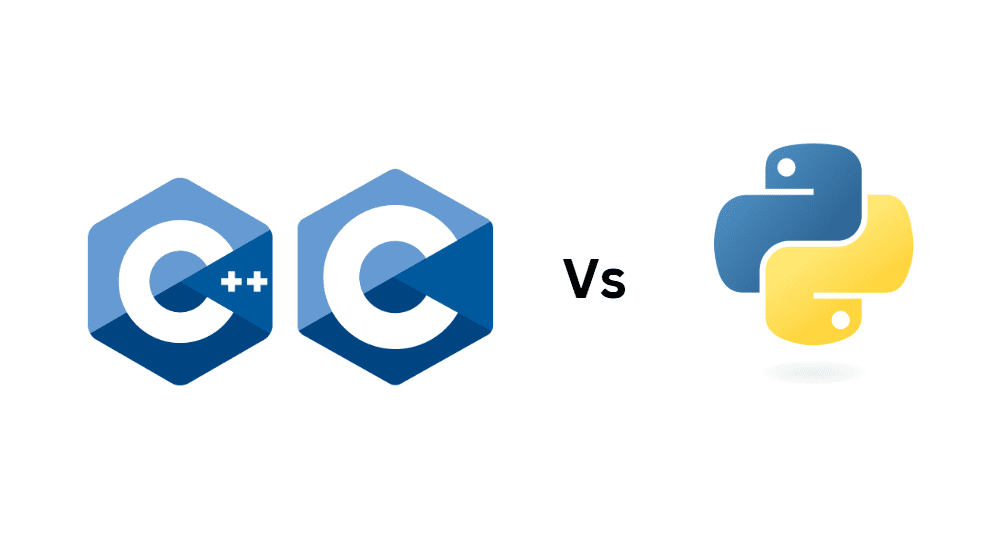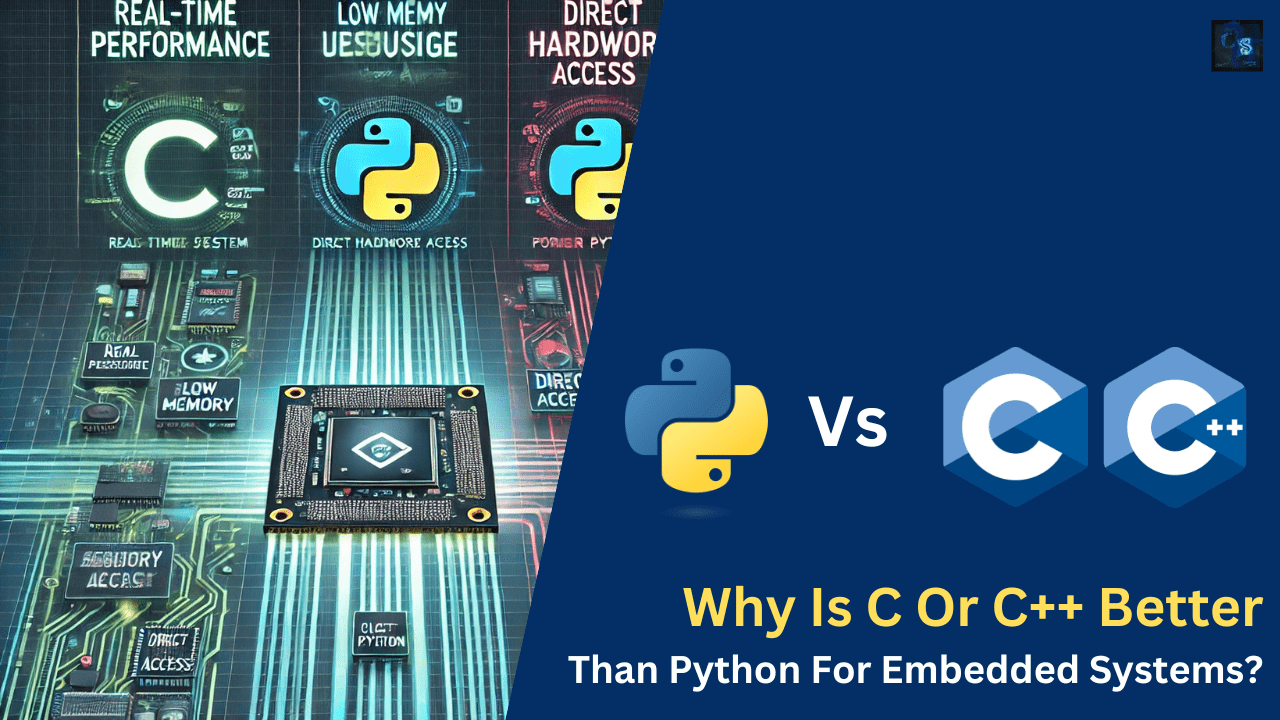Why Is C Or C++ Better Than Python For Embedded Systems?
Hello guys, welcome back to our blog. Here in this article, I will discuss why is C or C++ better than Python for embedded systems, and the best use cases for Python, C, and C++.
Ask questions if you have any electrical, electronics, or computer science doubts. You can also catch me on Instagram – CS Electrical & Electronics
- 7 Ways EV Batteries Stay Safe From Thermal Runaway
- Ensuring Tire Safety With Advanced Technologies
- Why MATLAB Simulink Is Most Popular In The Automotive Industry
Why Is C Or C++ Better Than Python For Embedded Systems
Embedded systems are specialized computing systems designed for specific tasks, often with hardware constraints such as limited processing power, memory, and real-time requirements. When developing software for embedded systems, choosing the right programming language is critical. While Python is widely used for general-purpose programming, automation, and scripting, C and C++ remain the dominant choices for embedded systems.

Key Requirements of Embedded Systems
Before comparing programming languages, it’s important to understand the key requirements of embedded systems:
- Low Memory Footprint: Embedded devices typically have limited RAM and storage.
- Efficient CPU Usage: Embedded systems often have low-power processors with limited clock speeds.
- Real-Time Processing: Many embedded applications, such as automotive and industrial systems, require real-time responses.
- Direct Hardware Access: Embedded software interacts closely with hardware components like sensors, actuators, and microcontrollers.
- Portability and Optimization: The code must be optimized for performance and power consumption.
Comparison of C, C++, and Python for Embedded Systems
| Feature | C | C++ | Python |
| Execution Speed | Fast | Fast | Slow (interpreted language) |
| Memory Usage | Low | Moderate | High (due to dynamic typing & garbage collection) |
| Real-Time Capabilities | Yes | Yes | No |
| Hardware Access | Direct | Direct | Indirect (through libraries) |
| Power Efficiency | High | High | Low |
| Portability | High | High | Low (requires Python runtime) |
| Ease of Development | Moderate | Moderate | Easy |
| Use in Safety-Critical Systems | Yes | Yes | No |
03. Why C is Preferred for Embedded Systems?
C is often the default choice for embedded development due to:
a. Low-Level Hardware Access
- C provides pointers, bitwise operations, and direct memory manipulation, allowing efficient interaction with hardware registers.
- Example: Writing to a hardware register in C
#define GPIO_PORT (*(volatile unsigned int*)0x40021000)
GPIO_PORT = 0x01; // Set GPIO pin
b. Real-Time Performance
- C enables precise control over execution timing, crucial for real-time embedded applications.
- Python, being interpreted, introduces garbage collection delays, making it unsuitable for real-time constraints.
c. Efficient Memory Usage
- C does not require a runtime interpreter, keeping memory usage minimal.
- Python’s memory overhead (due to dynamic typing and garbage collection) is not suitable for constrained devices.
d. Portability
- C code can run on bare-metal hardware or RTOS-based systems without modification.
- Python requires an interpreter, making it harder to port across microcontrollers.
04. Why is C++ used in Embedded Systems?
C++ builds on C and adds object-oriented programming (OOP) features while maintaining efficiency.
a. Code Reusability and Maintainability
- C++ supports classes, inheritance, and polymorphism, making code more modular.
- Example:
class LED {
private:
int pin;
public:
LED(int p) { pin = p; }
void turnOn() { /* Code to turn on LED */ }
void turnOff() { /* Code to turn off LED */ }
};
b. Abstraction Without Performance Overhead
- C++ allows low-level control like C but with added abstraction (e.g., encapsulation).
- Embedded frameworks like Arduino and ROS (Robot Operating System) use C++ for these benefits.
c. Support for Embedded Libraries
- C++ Standard Template Library (STL) provides efficient data structures.
- Embedded frameworks like AUTOSAR use C++.
05. Why Python is Not Suitable for Embedded Systems?
a. High Memory Usage
- Python uses dynamic typing and garbage collection, leading to high RAM usage.
- Example:
x = 10 # Takes more memory than a C integer
b. Lack of Real-Time Capabilities
- Python runs on an interpreter, making it slow and unpredictable for real-time tasks.
- Garbage collection (GC) pauses execution, which is unacceptable in safety-critical embedded systems.
c. Poor Hardware Access
- Python relies on external libraries (e.g., MicroPython) to interface with hardware.
- Native C/C++ code is much faster for direct hardware control.
d. Need for a Python Runtime Environment
- Python requires an interpreter or MicroPython, making it incompatible with many microcontrollers.
- C and C++ compile directly into machine code, eliminating the need for additional software layers.
06. When should you use Python in embedded systems?
While Python is not ideal for core embedded programming, it can be useful for:
01. Prototyping & Simulation:
- Python is great for rapid development and testing using Raspberry Pi, Jetson Nano, or BeagleBone.
02. High-Level Control & AI Integration:
- Python works well for AI/ML applications in embedded systems, such as image processing.
03. IoT and Data Processing:
- Python can be used on edge devices for data analysis and communication with cloud servers.
Example:
import time
import RPi.GPIO as GPIO
GPIO.setmode(GPIO.BCM)
GPIO.setup(18, GPIO.OUT)
while True:
GPIO.output(18, GPIO.HIGH)
time.sleep(1)
GPIO.output(18, GPIO.LOW)
time.sleep(1)
07. Best Use Cases for C, C++, and Python
| Use Case | Best Language |
| Real-time automotive systems (ABS, ECU, ADAS) | C |
| Low-power IoT sensors & microcontrollers | C |
| Embedded AI/ML applications | C++/Python |
| Robotics (ROS-based applications) | C++ |
| Industrial automation & control systems | C |
| Rapid prototyping & simulations | Python |
08. Conclusion: Why Choose C or C++ Over Python?
While Python is widely used for general-purpose programming, C and C++ remain the best choices for embedded systems due to:
- ✅ Efficient memory usage (no garbage collection overhead)
- ✅ Real-time execution (precise timing & direct hardware access)
- ✅ Portability (runs on bare-metal hardware without an interpreter)
- ✅ Power efficiency (critical for battery-powered devices)
- 🔹 Use C for low-level programming and real-time constraints.
- 🔹 Use C++ when object-oriented programming and abstraction are needed.
- 🔹 Use Python only for prototyping, IoT applications, or AI-based embedded systems.
👉 Final Recommendation: If you’re working on an embedded system, C or C++ should be your primary choice.
This was about “Why Is C Or C++ Better Than Python For Embedded Systems?”. Thank you for reading.
Also, read:
- 100 (AI) Artificial Intelligence Applications In The Automotive Industry
- 2024 Is About To End, Let’s Recall Electric Vehicles Launched In 2024
- 50 Advanced Level Interview Questions On CAPL Scripting
- 7 Ways EV Batteries Stay Safe From Thermal Runaway
- 8 Reasons Why EVs Can’t Fully Replace ICE Vehicles in India
- A Complete Guide To FlexRay Automotive Protocol
- Adaptive AUTOSAR Vs Classic AUTOSAR: Which One For Future Vehicles?
- Advanced Driver Assistance Systems (ADAS): How To Become An Expert In This Growing Field

